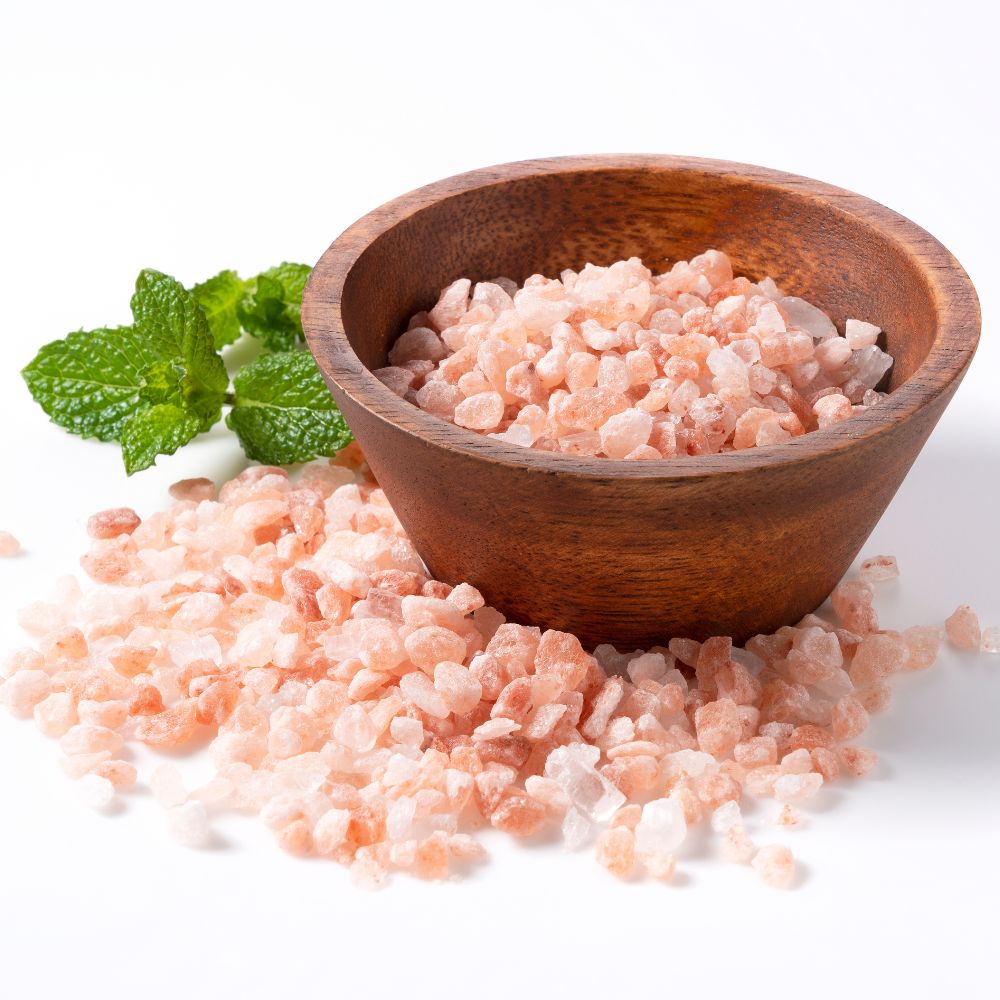Himalayan salt has gained significant popularity as a trendy alternative to regular table salt. Known for its striking pink color and purported health benefits, many people are curious whether Himalayan salt deserves a spot on their grocery list. In this article, we’ll explore the origins, nutritional content, culinary uses, and essential factors to help you decide by comparing Himalayan salt vs table salt if it’s worth adding to your pantry.
What Is It?
Himalayan salt is a natural rock salt harvested from ancient sea salt deposits in the Punjab region of Pakistan, near the Himalayas. Its distinctive pink hue comes from trace minerals, including iron, calcium, magnesium, and potassium. Unlike regular table salt, which is heavily processed, Himalayan salt is minimally refined, allowing it to retain more of its natural minerals.
Himalayan Salt vs. Table Salt
When comparing Himalayan salt to regular table salt, the differences in mineral content are notable. While table salt is primarily composed of sodium chloride, Himalayan salt contains up to 80 trace minerals. However, it’s important to understand that the concentrations of these minerals are relatively low.
For instance, the iron content contributes to the pink color, but you would need to consume an impractically large amount of Himalayan salt to gain any significant nutritional benefits. For most people, the difference in nutritional value is negligible, and both types of salt should be used in moderation.
Culinary Uses
Himalayan salt is versatile in the kitchen and can be used in various forms, including fine granules, coarse chunks, and salt blocks for grilling or serving. Its unique flavor profile—often described as more complex than standard table salt—makes it a favorite among chefs and home cooks.
Cooking Tips for Using Himalayan Salt
To make the most of Himalayan salt, consider the following tips:
- Seasoning: Use it as a finishing salt to enhance flavors. Sprinkle it on grilled meats, roasted vegetables, or salads for an extra flavor boost.
- Cooking: When using salt blocks, preheat them before cooking to create a delicious crust on meats or seafood.
- Baking: Incorporate fine Himalayan salt into dough or batters for baked goods to add a subtle saltiness.
Varieties of Himalayan Salt
Several types of Himalayan salt are available, each suited for different culinary uses:
- Fine Himalayan Salt: Ideal for everyday cooking and seasoning.
- Coarse Himalayan Salt: Great for brining or as a finishing touch on dishes.
- Salt Blocks: Perfect for grilling, chilling, or serving. These blocks can impart a mild salty flavor to foods while also serving as an attractive serving platter.
Consumer Awareness: Choosing Quality Himalayan Salt
When shopping for Himalayan salt, keep the following tips in mind to ensure you’re getting a quality product:
- Look for purity: Choose salts labeled as “100% pure Himalayan salt” to avoid additives.
- Check the source: Reputable brands will often indicate where their salt is sourced, typically from the Khewra Salt Mine in Pakistan.
- Be cautious of health claims: Many products tout health benefits that lack scientific backing. Focus on flavor and culinary uses rather than potential health perks.
Himalayan Salt vs Table Salt: A Quick Comparison
| Feature | Himalayan Salt | Table Salt |
|---|---|---|
| Source | Mined from ancient sea beds in Pakistan | Mined or evaporated from seawater |
| Processing | Minimally processed | Highly refined with additives |
| Color | Pink (due to trace minerals) | White |
| Mineral Content | Contains 80+ trace minerals | Mostly sodium chloride, often with iodine |
| Flavor | Subtly complex, earthy | Pure, sharp saltiness |
| Uses | Cooking, finishing, salt blocks | Cooking, baking, preserving |
| Health Benefits | Trace minerals present, minimal impact | May include added iodine for thyroid health |
| Appearance | Aesthetic appeal, artisanal | Standard, uniform |
| Cost | Generally more expensive | More affordable |
Add to Your Grocery List?
So, is Himalayan salt better? When considering Himalayan salt vs table salt, while Himalayan salt offers unique culinary advantages and a beautiful presentation, its nutritional benefits over table salt are minimal. Ultimately, the choice may come down to personal taste and how you plan to use it in your cooking. As with all salts, moderation is key, and a balanced diet rich in whole foods will always be the best approach to health. Adding Himalayan salt to your grocery list can enhance your culinary experience, but it should complement, not replace, a diverse diet.
Frequently Asked Questions (FAQ)
Not significantly. Although trace minerals are present in Himalayan salt, the concentrations are insufficient to provide significant health advantages. Both should be used in moderation.
Typically, no. Most table salt is iodized to help prevent iodine deficiency, while Himalayan salt is naturally non-iodized unless labeled otherwise.
Yes! You can use fine Himalayan salt in recipes in place of coarse salt. Just be mindful of grain size when measuring.
The salt’s trace minerals, particularly iron, are what give it its pink hue. It’s purely aesthetic and doesn’t significantly impact flavor or nutrition.
It depends on your priorities. If you value aesthetics and subtle flavor differences, it can enhance your cooking experience. For health, the difference is minimal.

